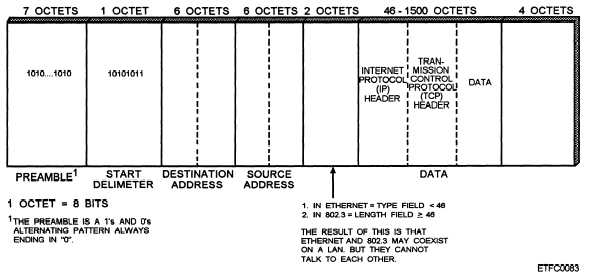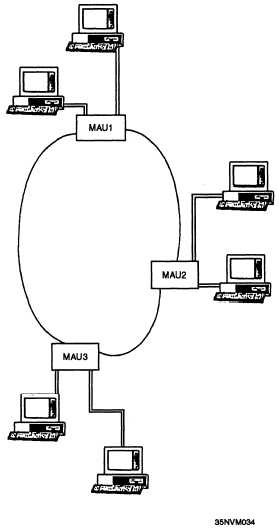Figure 7-20.—A typical token ring network.
The recommended cable for a typical token ring
setup is two pairs of twisted wire covered by a foil
shield. Maximum cable length between the token-ring
hub and the attachment point for the network node
cannot exceed 150 feet. Provisions are also available
for linking hubs through fiber optic cable. Connectors
include “D” shell for the twisted pair wire and fiberoptic
connectors (MIL-C-28876). Cabling for the token-ring
prevents one bad cable from bringing down the entire
system.
IEEE 802.3 (Ethernet DIX)
IEEE 802.3 is a specification that describes a
method for computers and data systems to connect and
share cabling (i.e., PC’s and mainframes). It transfers
serial I/O data in a specific packet format (fig. 7-21).
The IEEE 802.3 standard is commonly referred to as
Ethernet. Although Ethernet and 802.3 share the same
cable access mode (carrier sense multiple access), they
differ in both physical implementation and actual
packet make-up. Ethernet preceded IEEE 802.3 by
almost 10 years. Ethernet was developed by Robert
Melcalf at Xerox’s Palo Alto Research Center. Ethernet
is the forerunner of IEEE 802.3. Because of the
differences in packet formation and physical
construction of the equipment associated with each of
these standards, the networking community currently
follows the original Ethernet standard implementation
by the DIX suffix (DIX stands for DEC, Intel, and
Xerox, the original collaborators on the Ethernet
standard).
Figure 7-21.—802.3 and Ethernet packet formats.
7-25



